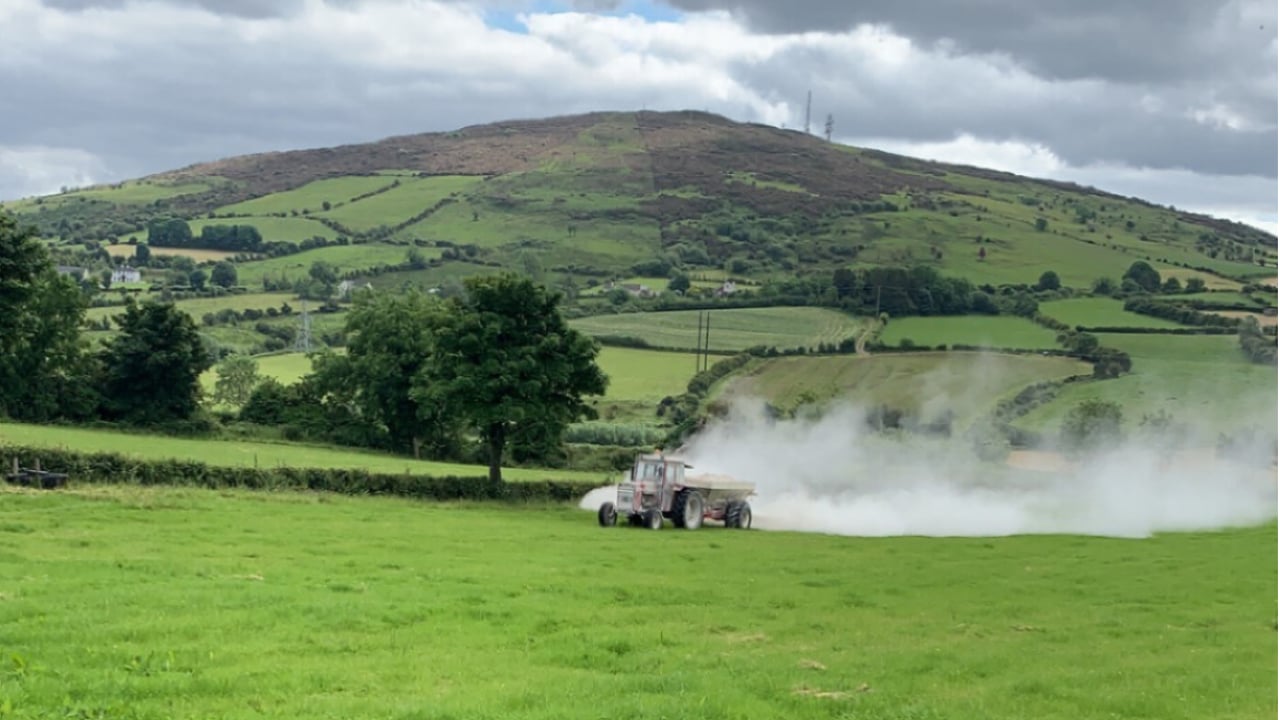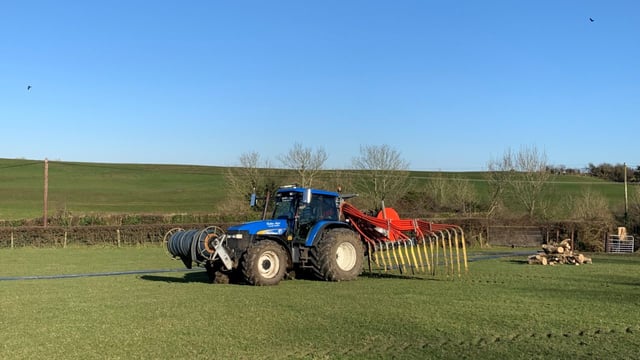Lime: Should you be applying during the grazing season?
Lime can often be forgotten about when a fertiliser plan is put together and, while collecting soil samples is one thing, it is another to actually put them to use to correct soil fertility.
Current figures show that Ireland is only applying 50% of the national lime requirements, with 80-85% of our soils testing sub-optimal for major nutrients, such as soil pH, phosphorus (P), and potassium (K).
Efficient nitrogen (N) use starts with correcting soil pH. Studies show that we can double our N efficiency by correcting soil fertility and reducing fertiliser N use, which in turn leads to reduced costs.
Spreading lime has one of the quickest returns on investment across any measure taken on farms, as for every €1 invested, it will return €4-€7 in the form of extra grass growth, reduced N usage and increased soil fertility.
Liming acidic soils increases grass production by 1.0t DM/ha, which is valued at €180/t DM on dairy farms - an application 5t/ha/year costs €25/ha/year over five years.
Lime is often seen as a back-end job in October, November and December but over the last few years, these months have been the wettest making fields inaccessible which often leads to a missed opportunity for getting it out.
Therefore, opportunities to spread lime during the grazing season should be taken to grow more grass and to get a proper hold of our N balance.
Ideally, when paddocks have just been grazed and covers are low, lime should be applied to paddocks that require it, which should be identified from your soil samples.
In order to keep your soil fertility at an optimum, you are probably looking away from soil sampling every four years, and rather targeting collecting samples every two years to keep up to date and ahead of your soil fertility.
This may require a farmer to order a load of lime which is about 20t after each grazing rotation to correct soil pH which will cover about 10ac at about 2t/ac.
Spreading lime on high covers of over 800kg DM/ha should be avoided as this can lead to lime residues remaining on the grass when cows get back around to graze it.
Rainfall will typically wash the majority of the lime from the grass to the soil and even if a small amount of lime is left on the leaf, it will not affect grazing animals.
Between April and August, it tends to be the driest period of the year and it is typically when grass covers are naturally at their lowest which means lime should be applied in this period.
Lime should be applied a little but often without exceeding 5t/ha in a single application as by applying a split application of 2.5t/ha over a number of years will allow you to build soil pH in stages over time.
Sufficient time should be left of up to three months in dry weather between applying lime and closing for grass silage to make sure the lime is fully washed into the soil.
Residues in grass silage, when the grass is ensiled in the silage pit or in a bale, it may affect good preservation conditions for the silage.
When cattle slurry is spread too soon after lime was applied and the lime is not fully absorbed by the soil, it can result in a loss of up to 50%of the available N.
In order to prevent this from happening and to minimise N losses, apply slurry first and then apply lime a week to 10 days later, once covers are still low.
N loss through ammonia N volatisation where straight urea is applied on recently lime land and should be applied a week to seven days prior to lime spreading unless protected urea is used.
Early trial work indicates that protected urea can be applied to paddocks that have been applied with lime recently.
High molybdenum soils can cause a copper deficiency in grazing animals and on these soils, when soil pH goes above 6.2, the availability of molybdenum increases and so a soil pH of 6.1 to 6.2 should be maintained unless the cows are supplemented with copper.





